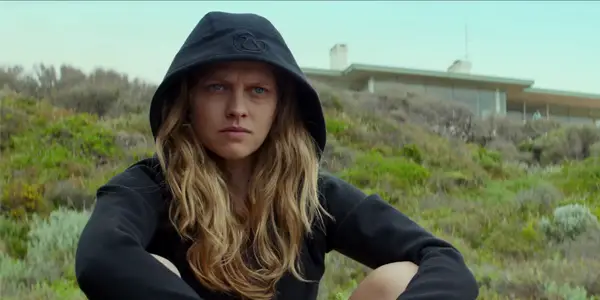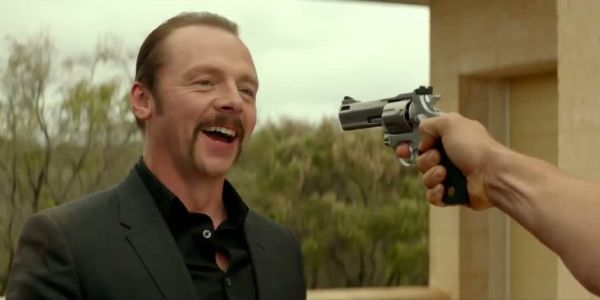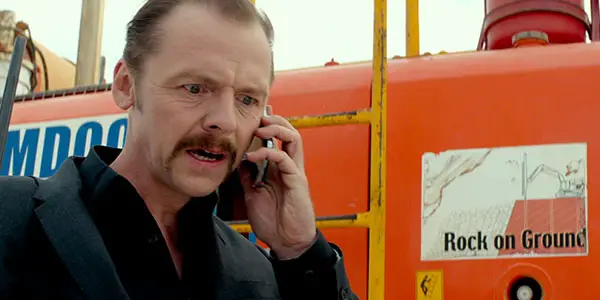KILL ME THREE TIMES: A Complete Mess of Zero Proportions

Alex is a 28 year-old West Australian who has a…
Kill Me Three Times is a film which is the right step forward for Australian cinema, done in the worst way possible. For the past decade, Australia has lacked films that have managed to cross international borders and bring new talent to life, which is a process which used to happen back in the day, from George Miller to Phillip Noyce. The only significant films of the past 10 years to really make any impact are David Michôd’s Animal Kingdom, which reminded audiences and filmmakers of the acting talents of Ben Mendelsohn and Jacki Weaver, who have become international stars. The other film is Snowtown, which showed enough promise from director Justin Kurzel for American producers to allow him to make Macbeth, one of the hotly anticipated films for the upcoming awards season.
Apart from that, many Australian films other cling to their Australian roots too closely whilst not saying anything new and due to the sheer amount of quantity of these films, are widely dismissed by Australian audiences, being left to niche audiences who don’t provide enough money to have these films make financial sense. The other type of Australian films being made are genre pictures, which Australia has always been good at, but much like the American B-Movie scene, they always fall into predictable plotlines, frequently delving into tropes and feeling like low budget rip-offs of successful American movies.
Last year’s Son of a Gun felt like a derivative of Michael Mann’s better films, without injecting any originality or elevated talent to make the film worth watching. Kriv Stenders’ latest effort, Kill Me Three Times, is a lazy Tarantino film which uses a non-linear timeline to cover up a lacklustre story, filled with one-note characters played by actors clearly chasing the rare Aussie acting paycheck.
A Wolfe In Sheep’s Clothing
Kill Me Three Times is a Rashomon-esque crime thriller, which centres on Charlie Wolfe, portrayed by Simon Pegg, whose comic talents are gone to waste on a character who is given nothing original or significant to do throughout the entire film, despite him and the actor playing him, being the main attraction for the film. Wolfe is contacted by Jack (Callan Mulvey) the abusive husband of Alice Taylor (a severely miscast Alice Braga), who he wants killed as she is having an affair with mechanic Dylan (Luke Hemsworth, the third of the acting brothers).
Meanwhile, Lucy Webb (Teresa Palmer) and Nathan Webb (a clean-shaven Sullivan Stapleton) attempt to kill Alice as well, to try to claim an insurance benefit to pay off Nathan’s gambling debts. Oh and corrupt cop (Bryan Brown) bumbles around occasionally, in an attempt to make the plots more interconnected. Bryan Brown is just as wasted here as Simon Pegg, popping up in each segment with his Halloween costume cop outfit, trying to intimidate each of the cast members, being as threatening as a customer who refuses to shop at a grocery store again.

Calling something a Tarantino ripoff is usually a lazy insult, people usually apply it to any film which attempts to use stylised dialogue, non-linear plot developments or violent gangster romps which have shades of comedy in them. Kill Me Three Times is compared to Tarantino because of how similar to his work it is, without understanding why Tarantino’s films are so celebrated. Whilst stylised dialogue is always great to listen to and fun to watch be performed, Tarantino’s dialogue gives a sense of character, usually a brief insight to their particular outlook on life.
A great example of this is the opening of Reservoir Dogs, which features the full bank robbing crew together, starting on a discussion on Madonna. The way that each crew member does (and doesn’t) contribute to the conversation gives an idea of who the character is and how they interact with each other. Kill Me Three Times is a film which doesn’t try to do Tarantino-esque dialogue, thankfully, but follows the formula of observing his work on a surface level without understanding the machinations behind why it works.
The use of ‘Misirlou’ in Pulp Fiction, the upbeat surf rock number which opens up the film (and became the unofficial theme song of the film) works because it opens up the film in an energetic style, ramping up the audience for the bizarre situations that are about to go down. Kill Me Three Times has its own Misirlou-sounding surf rock guitar riff to begin with, but then repeats it several times. It is quite forgettable and establishes the tone, but then is repeated ad naseum until the song’s effects are worn off and it becomes quite grating. It’s quite a monotonous sound and is used in every situation in the film; one of the many scenes of driving in the film? Guitar riff. Sex Scene? Guitar Riff. You get my point.

Another attempt of stylisation within the film is occasionally a shot will flip horizontally. But why? It’s never done with any meaning. It just randomly happens, not associated with any action or meaning within the film, making it a point of overt stylisation for no reason. The Dutch tilts in The Third Man had meaning, they looked great and were always used in certain moments of the protagonist’s journey, randomly flipping the camera briefly throughout the film is redundant.
Another Case of Style over Substance
The film’s non-linear structure, another Tarantino staple, is confusing. The film is trying to attempt Rashomon-type storytelling, which involves an incident which is given multiple interpretations by different characters, each viewpoint delivering new information to the audience and allowing them to piece together the unfolding story. The reason the film fails at this is because each of the segments fail to bring an individual voice or fresh perspective, making the film convoluted and repetitive for the sake of pure style.
The first segment (labeled “Kill Me One Time”) flips between the perspectives of Lucy and Nathan Webb as they try to kill Alice, whilst Charlie Wolfe watches and comments on each progression. You’re watching these events from two conflicting points of view: the Webbs, who have all the information and are trying to commit murder, and Wolfe’s, who is an introductory character in this world and is attempting to learn what is happening.
The film makes no clear distinction who we are meant to be following, which is a confusion that carries into the next two segments. Rather than have each segment revolve around a character and his view on the events, each segment reintroduces the previous segment and merely pushes the time lineage forward. Consequently, there’s a lot of backtracking in the film and pointless exposition scenes between characters to make the segments feel meaningful.

To add to this, the entire film is told via flashback, as the film opens with Charlie Wolfe encumbered, telling the audience “You’re wondering how I got here”. The idea of the flashfoward/flashback is so inherently lazy and meaningless, a cheap attempt at trying to get the audience’s immediate attention and a sense of a conclusive ending that must lead to the opening event. It’s an annoying screenwriting device, even awfully used recently in Max Landis’ American Ultra and felt just as pointless there. This is a standard case of style over substance, or it seems to be a case of the screenwriter writing a cool title and trying to justify it through the film.
On that same note of confused delivery, the film’s violent tone and characterisation are never established initially, creating a world that is never fully fleshed out. The town, Eagles Nest, is seemingly portrayed as a peaceful isolated Australian town. But nothing that happens in the film proves it, as there’s no setup, so we never see this peaceful town or the characters who inhabit this town doing regular things or having any sense of character outside of their violent and criminal tendencies. Trying to make a film where the quiet town is rocked by a seedy underbelly of crime and violence needs to be set up as such so we can see this juxtaposition of peacefulness versus its descent into chaos. Each character is constantly scheming, yelling and being violent, failing to render any of them likable, and void of having any character traits outside of their actions.
The Verdict
Kill Me Three Times is a film which values style over substance and fails because of it. Kriv Stenders’ direction of this comedic crime thriller is dripping in unnecessary stylisation, which features a monotonous soundtrack and random shifts in cinematography. James McFarland’s convoluted script takes a predictable story and jumbles its timeline around in an attempt to seem interesting, filled with one-note characters who lack any definition to allow the actors portraying them anything to work with.
Simon Pegg, the main draw of the film, is sidelined for the majority of the film, usually acting as a bored commentator on the stock-standard crime shenanigans that are unfolding. The rest of the cast range from seeming bored to lacking any proper direction, going from over the top theatrical to very stiff between scenes. Kill Me Three Times is a step in the right direction in terms of trying to create an Australian film which has international appeal, but by attempting this by using a bland, by-the-numbers crime thriller which feels like a rejected B-Movie from the 90s, the film is a sad disappointment. One can only hope someone else picks up the reigns and begins the journey for more internationally-friendly Australian films that actually make some money for once.
What other movies can you think of that failed to copy Tarantino’s style?
For international release dates of Kill Me Three Times, click here.
(top image source: Magnet Releasing)
Does content like this matter to you?
Become a Member and support film journalism. Unlock access to all of Film Inquiry`s great articles. Join a community of like-minded readers who are passionate about cinema - get access to our private members Network, give back to independent filmmakers, and more.













